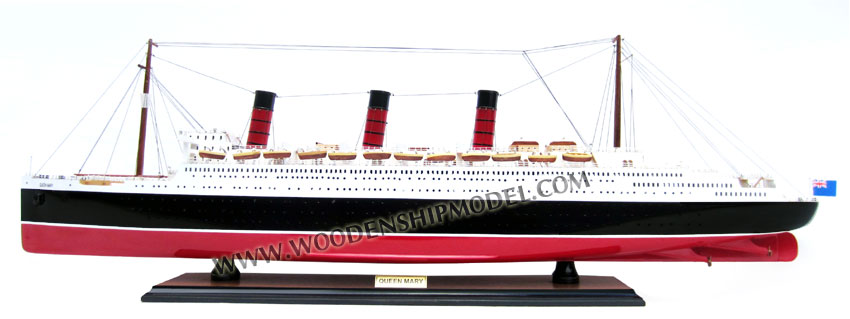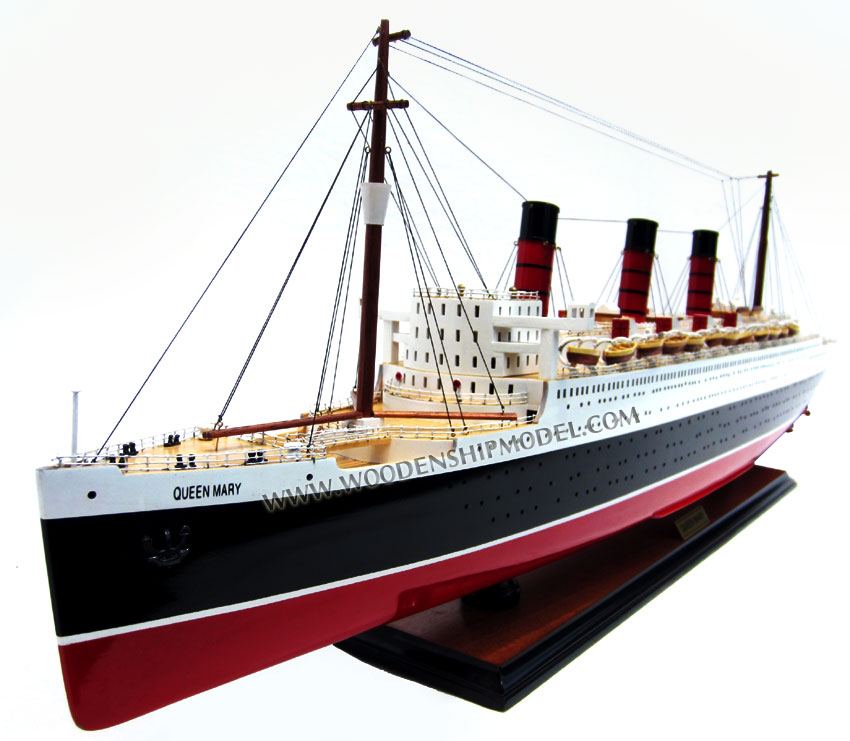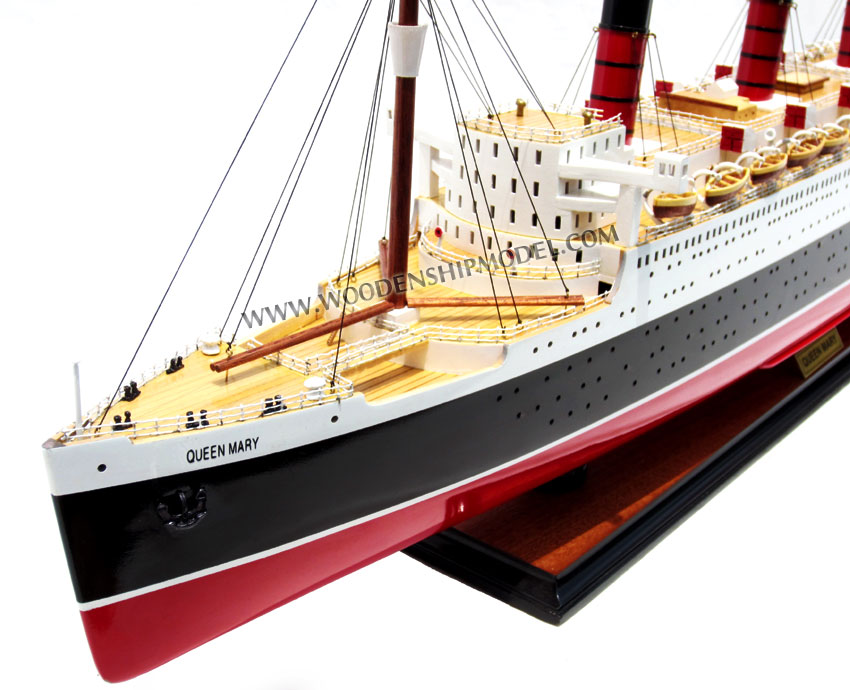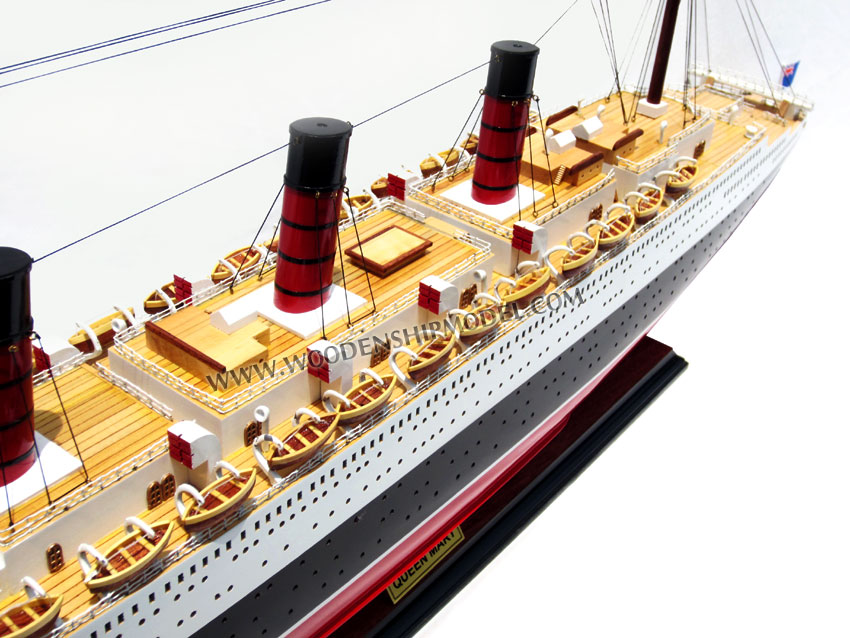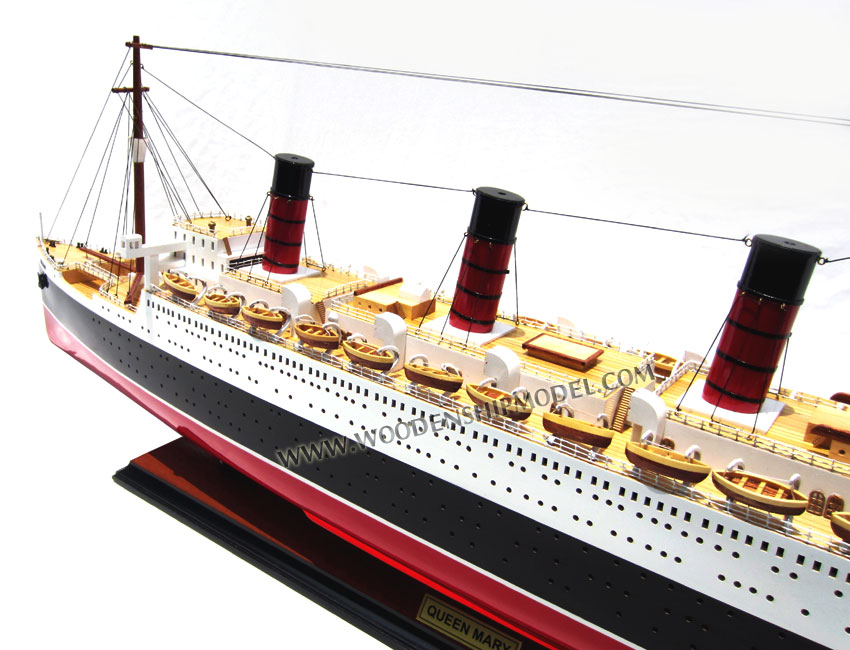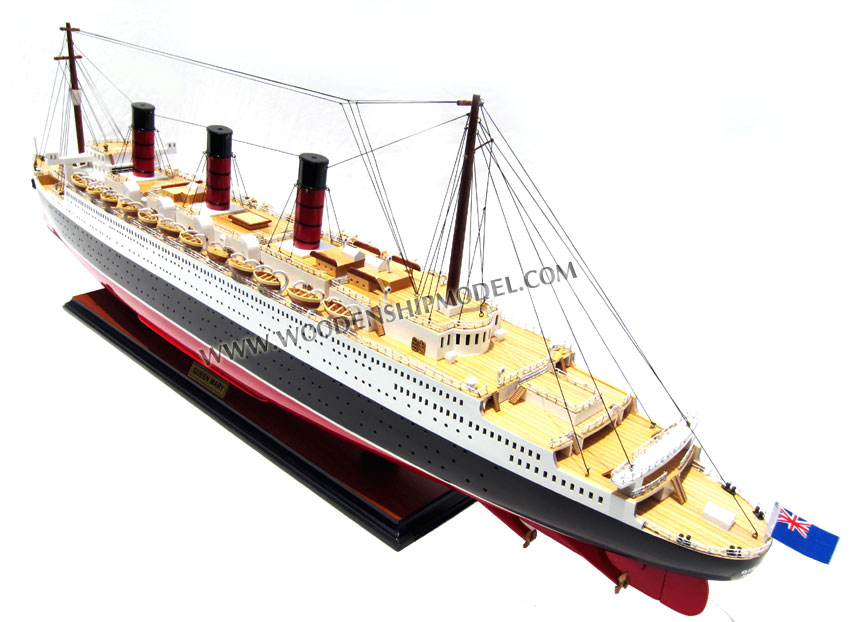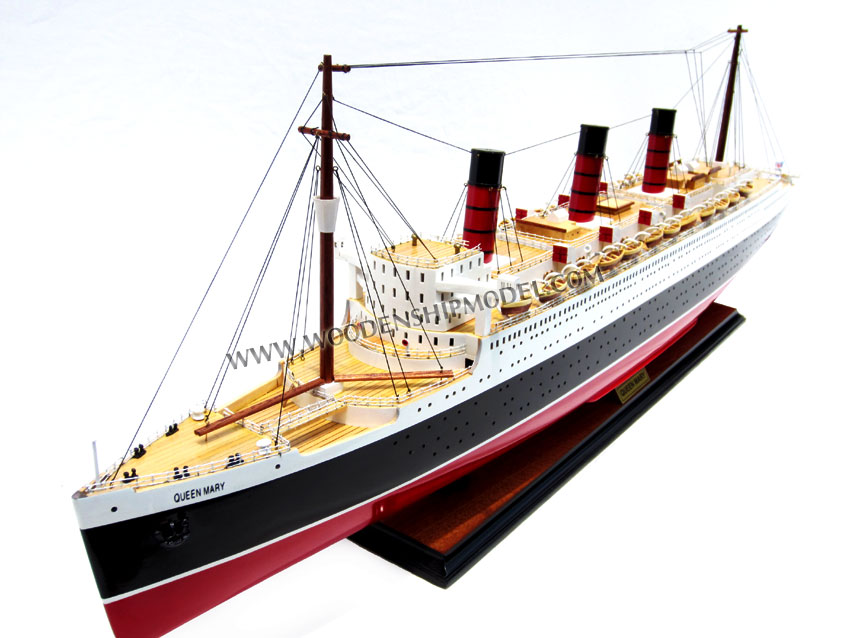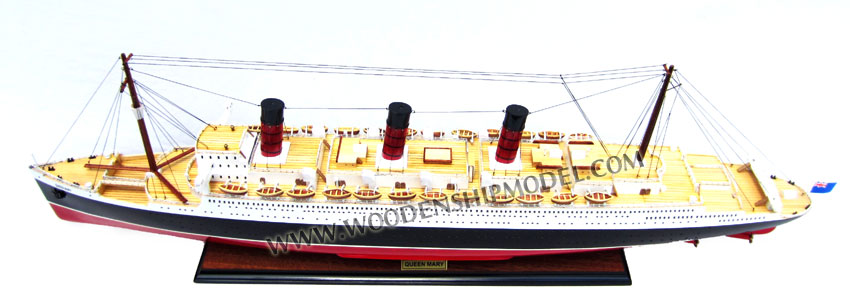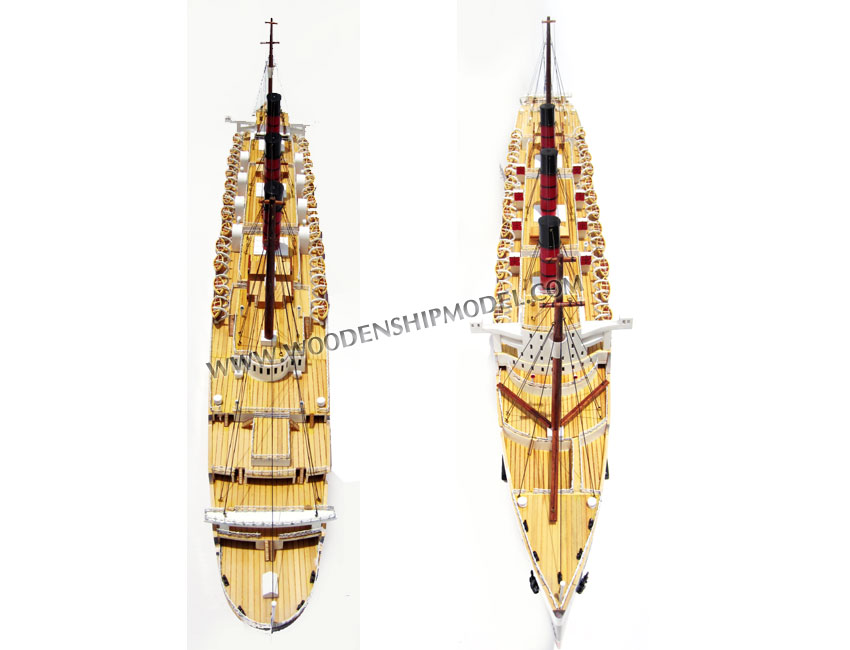|
BRIEF HISTORY
RMS
Queen Mary is a retired ocean liner that sailed primarily on
the North Atlantic Ocean from 1936 to 1967 for the Cunard
Line (known as Cunard-White Star Line when the vessel
entered service). Built by John Brown & Company in
Clydebank, Scotland, Queen Mary along with her running mate,
the RMS Queen Elizabeth, were built as part of Cunard's
planned two-ship weekly express service between Southampton,
Cherbourg, and New York City. The two ships were a British
response to the superliners built by German and French
companies in the late 1920s and early 1930s. Queen Mary was
the flagship of the Cunard Line from May 1936 until October
1946 when she was replaced in that role by Queen Elizabeth.
Queen Mary sailed on her maiden voyage on 27 May 1936 and
captured the Blue Riband in August of that year; she lost
the title to SS Normandie in 1937 and recaptured it in 1938,
holding it until 1952 when she was beaten by the new SS
United States. With the outbreak of World War II, she was
converted into a troopship and ferried Allied soldiers for
the duration of the war. Following the war, Queen Mary was
refitted for passenger service and along with Queen
Elizabeth, commenced the two-ship transatlantic passenger
service for which the two ships were initially built. The
two ships dominated the transatlantic passenger
transportation market until the dawn of the jet age in the
late 1950s. By the mid-1960s, Queen Mary was ageing and,
though still among the most popular transatlantic liners,
was operating at a loss.
After several years of decreased profits for Cunard Line,
Queen Mary was officially retired from service in 1967. She
left Southampton for the last time on 31 October 1967 and
sailed to the port of Long Beach, California, United States,
where she remains permanently moored. Much of the machinery,
including one of the two engine rooms, three of the four
propellers, and all of the boilers, were removed. The ship
serves as a tourist attraction featuring restaurants, a
museum, and hotel. The ship is listed on the National
Register of Historic Places. The National Trust for Historic
Preservation has accepted the Queen Mary as part of the
Historic Hotels of America.
Queen Mary is permanently moored as a tourist attraction,
hotel, museum, and event facility in Long Beach. From 1983
to 1993, Howard Hughes' plane Spruce Goose, was located in a
large dome nearby. (This structure is now used by Carnival
Cruise Lines as a ship terminal, and as a venue for the
local roller derby team, the Long Beach Derby Gals.) an
event venue, It was formerly a soundstage).
Since drilling had started for oil in Long Beach Harbor,
some of the revenue had been set aside in the "Tidelands Oil
Fund." Some of this money was allocated in 1958 for the
future purchase of a maritime museum for Long Beach.
|

